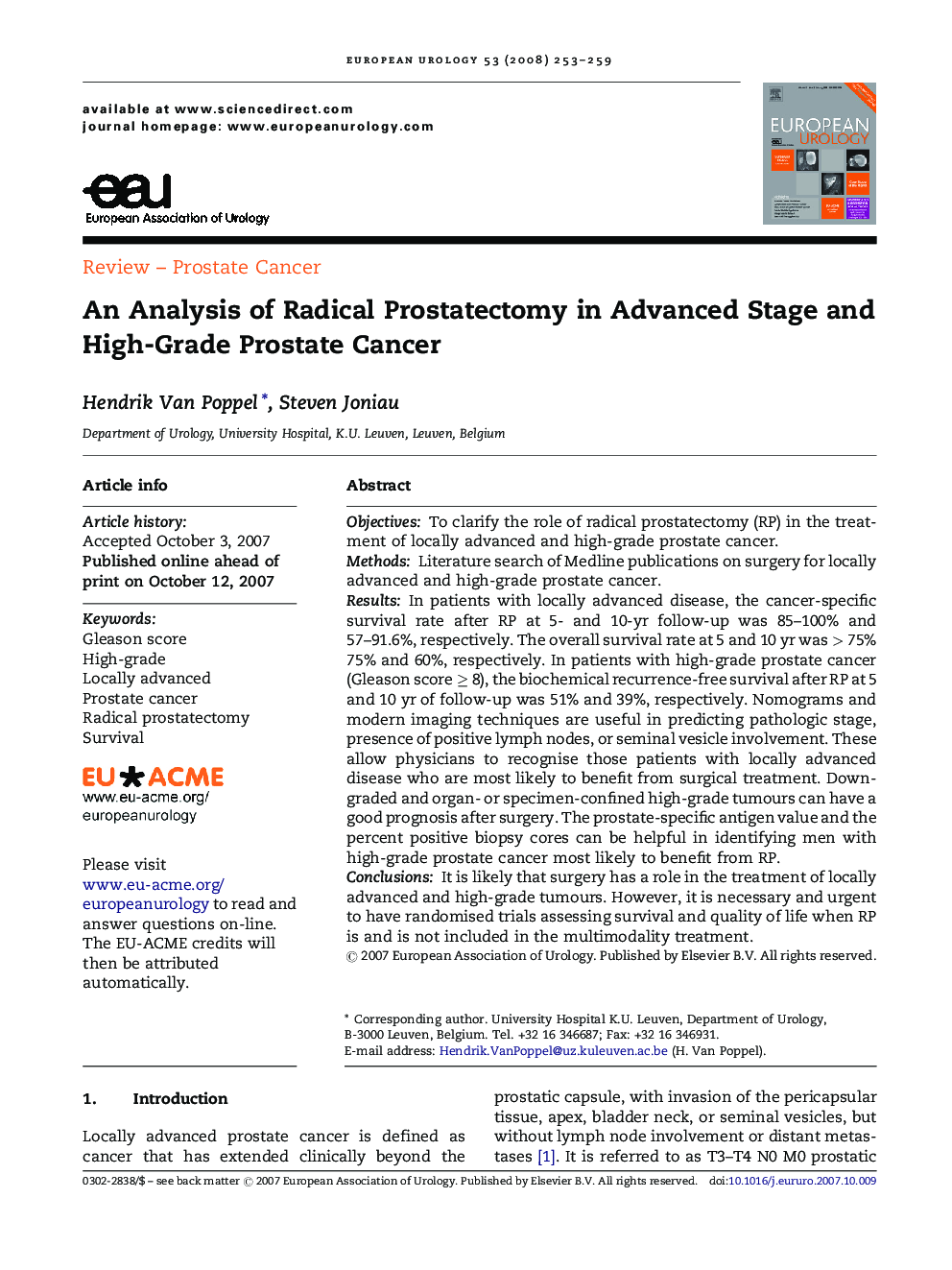| Article ID | Journal | Published Year | Pages | File Type |
|---|---|---|---|---|
| 3925888 | European Urology | 2008 | 7 Pages |
ObjectivesTo clarify the role of radical prostatectomy (RP) in the treatment of locally advanced and high-grade prostate cancer.MethodsLiterature search of Medline publications on surgery for locally advanced and high-grade prostate cancer.ResultsIn patients with locally advanced disease, the cancer-specific survival rate after RP at 5- and 10-yr follow-up was 85–100% and 57–91.6%, respectively. The overall survival rate at 5 and 10 yr was > 75% and 60%, respectively. In patients with high-grade prostate cancer (Gleason score ≥ 8), the biochemical recurrence-free survival after RP at 5 and 10 yr of follow-up was 51% and 39%, respectively. Nomograms and modern imaging techniques are useful in predicting pathologic stage, presence of positive lymph nodes, or seminal vesicle involvement. These allow physicians to recognise those patients with locally advanced disease who are most likely to benefit from surgical treatment. Downgraded and organ- or specimen-confined high-grade tumours can have a good prognosis after surgery. The prostate-specific antigen value and the percent positive biopsy cores can be helpful in identifying men with high-grade prostate cancer most likely to benefit from RP.ConclusionsIt is likely that surgery has a role in the treatment of locally advanced and high-grade tumours. However, it is necessary and urgent to have randomised trials assessing survival and quality of life when RP is and is not included in the multimodality treatment.
